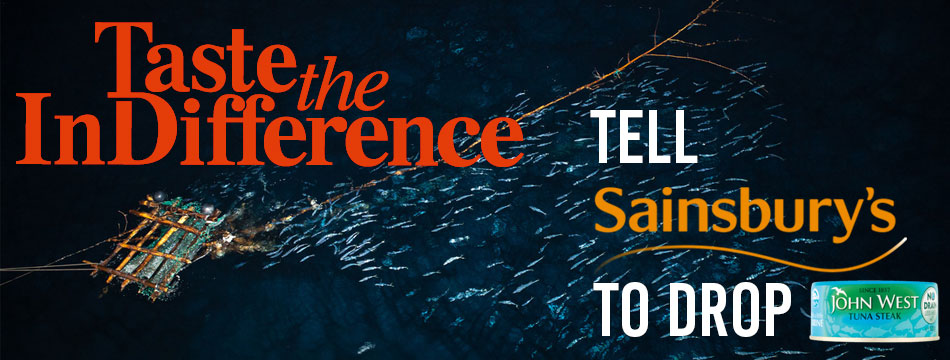VIDEO - bottom trawling destroys the seabed
Worldwide, the fishing industry is in decline because of years of over fishing. In 1988, for the first time in human history, global wild fish catches dropped and they have continued to fall ever since. In European waters, four out of every five known fish stocks are already beyond safe biological limits. As stocks decline, more extreme fishing methods have been employed to maximise catches of those that remain. One of the most destructive methods of catching fish is bottom trawling.
The biggest bottom trawl nets have mouths as wide as the length of a rugby field. Weighted with heavy metal rollers, the nets smash and crush everything in their path as they indiscriminately swallow vast quantities of marine life.
If the same technique were used on land, it would be like dragging a vast net across the countryside - crushing trees, farms and wildlife in the process - to catch a few cowsAs you can see from the video, bottom trawling can plough huge furrows into the seabed. Trawl scars can be up to 4km long. And it's unbelievably wasteful - destroying fragile corals and smashing rock formations, as well as tonnes of fish and other animals as so-called bycatch. Bottom trawlers usually fish for particular species such as plaice, hake or sole, but they are normally only a small part of the catch. In 2004 it was reported that bottom trawling killed up to 16lb of other animals in order to produce just 1lb of marketable sole. Most of the dead or dying marine animals are considered worthless and dumped over the side.
Almost 1500 scientists from 69 countries have called for protection for marine ecosystems from bottom-trawling. In his book, The Unnatural History of the Sea, Professor Callum Roberts paints a memorable picture of the scene aboard a bottom trawler as the catch is hauled in:
Apart from the feeble flap of a fin here and there, and the jerking death struggle of a starfish, the catch seems lifeless. Few animals survive ascent from such great pressures. Most fish lie with mouths agape, tongues forced from their heads by bloated swim bladders and sightless eyeballs starting from their sockets. … branches of pink bamboo corals, torn sponges and coiled sea fans, sea urchins, sea cucumbers, crabs with first-sized bodies attached to long slender broken legs, deep-water sharks with humped backs and hooded silver eyes, slime-wrapped hagfish and gargoyle-faced grotesques with names only scientists would know.
Waste on such a gargantuan scale is not remotely sustainable. Scientists are predicting that unless we take urgent action, all of the world’s current fisheries could collapse by 2048. As Professor Daniel Pauly of the University of British Columbia's Fisheries Centre has remarked, the only seafood left for us to eat would be plankton stew.
But it doesn't have to be like this. We know that fish stocks and the fishing industry can recover. The solution is a combination of no-take marine reserves and sustainable fishing.
If forty per cent of the world’s oceans were covered in marine reserves – national parks at sea – and the other sixty per cent were fished sustainably, then fish stocks and ecosystems could begin to recover. And fishing communities would benefit too, because marine reserves allow fish to flourish which then fan outward.
As a critical step to achieving sustainable fishing, Greenpeace is campaigning for the eradication of environmentally destructive fishing practices. In December 2006, the UN General Assembly itself debated a ban on bottom trawling by member states, but the proposal was eventually blocked.
In May 2007 the South Pacific Regional Fisheries Management Organisation banned bottom trawling in the high seas areas it manages (accounting for about 25 percent of the global ocean), while the North East Atlantic Fisheries Commission recently closed four seamounts and part of the mid-Atlantic ridge from all fishing. Despite this progress, the vast majority of international waters still remain unprotected.


